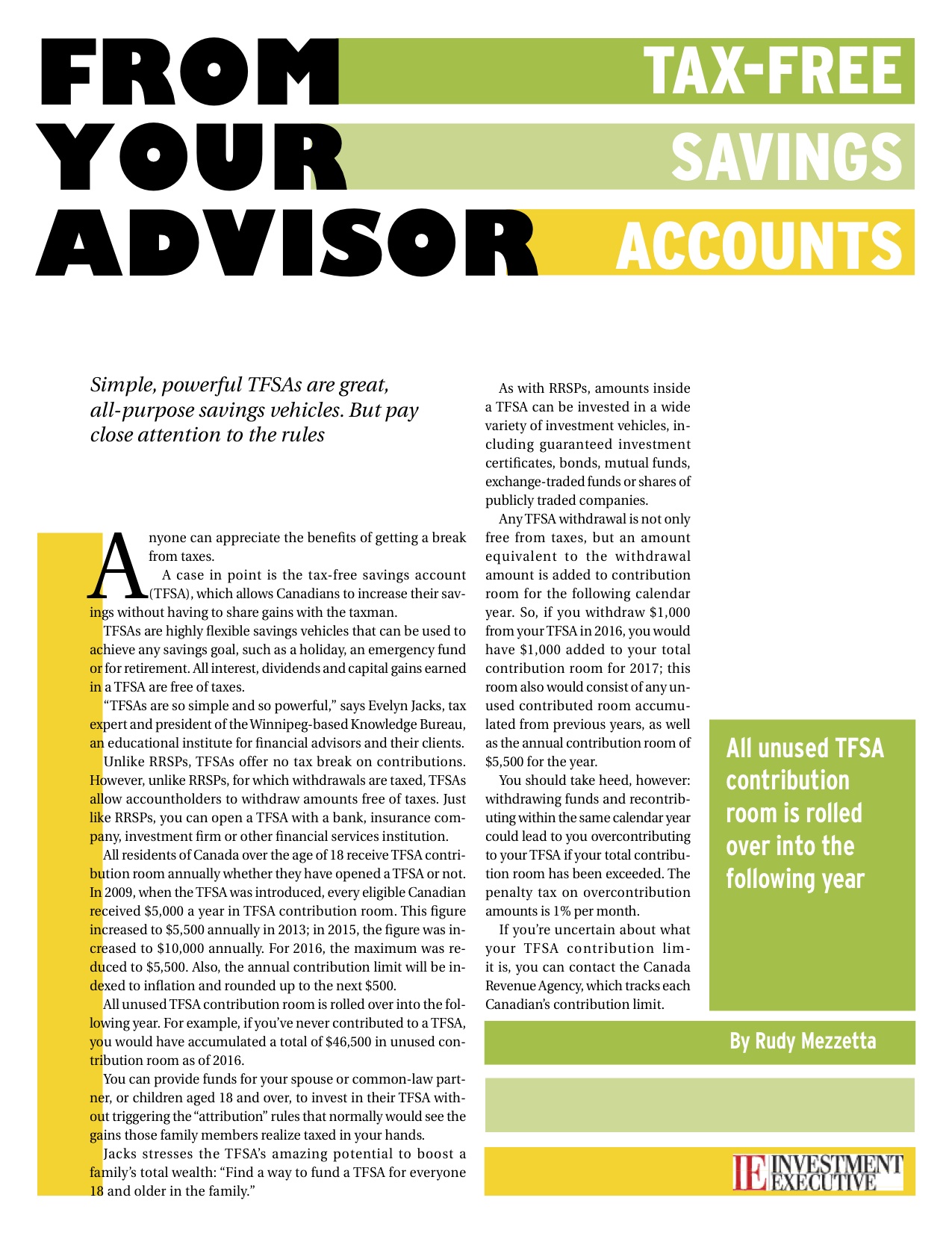
While the term tax-free savings account (TFSA) implies a savings vehicle, TFSAs are among the most useful investment, retirement-planning and tax-planning tools.
However, according to a study by Bank of Montreal released this month, a significant percentage of Canadians are confused about how TFSAs work and what investments they can hold. The poll, conducted by Pollara, revealed that 67% of Canadians said they have some knowledge of TFSAs and 17% said they were very knowledgeable. But only 3% were able to correctly answer eight basic true-or-false questions about TFSAs.
It is therefore important to ensure that your clients understand how they can benefit from their TFSAs. Here are five facts about TFSAs to share with your clients.
1. TFSAs are more than a savings account
Make sure your clients understand that their TFSAs can hold qualified investments similar to those that can be held in their RRSPs. These investments include stocks, bonds, mutual funds, exchange-traded funds, guaranteed investment certificates and cash. Clients will have no tax consequences on the gains these investments realize.
TFSAs allow for a great deal of planning options, says Heather Holjevac, senior wealth advisor with TriDelta Financial Partners in Oakville, Ont. For example, you can help your clients determine how to allocate savings between their RRSPs and their TFSAs.
2. TFSAs can create tax-free income in retirement
Holjevac recommends high-income retirees use TFSAs to shelter interest income from taxes.
For example, if clients are not expecting their tax rate to decline during retirement, they can maximize the use of TFSAs to earn tax-free income. This income can be used to bridge other income sources in early retirement, enabling either early receipt of Canada Pension Plan (CPP) benefits or the early drawdown of RRSPs. Again, income from their TFSAs will not be taxed.
3. TFSAs can facilitate early retirement
An early retiree who is in a low tax bracket and is not yet receiving old-age security (OAS) or CPP income can make withdrawals from an RRSP and place the after-tax funds in a TFSA, Holjevac says.
In such cases, the client’s registered retirement income fund would generate a lower amount of taxable income, while the investments in the TFSA would generate tax-free income. Any income or withdrawals from TFSAs do not affect government income-tested benefits or credits such as OAS benefits, Holjevac adds.
4. TFSAs’ benefits can be increased through an accelerated growth strategy
Clients can get more from TFSAs by investing in high-growth assets that could potentially double in value over a longer period, thus avoiding capital gains taxes. This strategy can be useful for clients who are saving, over the long term, to purchase a home or other big-ticket items, because it provides tax-free growth.
5. TFSAs are effective tools for income-splitting, gifting and estate-planning strategies
Because unused TFSA room can be carried over from year to year, Holjevac says, clients can use accumulated room for cross-generational gifting and estate planning. For example, lump sums realized from estate transfers or the sale of a family home for downsizing in retirement can be placed in a TFSA to fill unused contribution room. Gains or income generated in the TFSA would be tax-free.
Funds gifted between spouses also can be invested in a TFSA. This strategy, Holjevac says, can help to equalize future income streams and lower overall family taxes; the growth of the funds in a spouse’s TFSA is not taxable and gains made in that TFSA are not attributable to the gifting spouse.